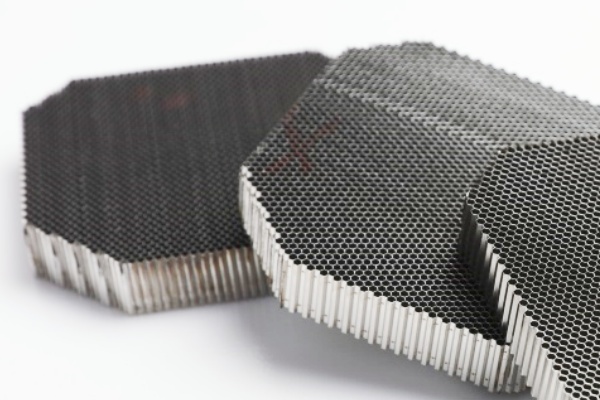To be a valuable global supplier
for metallic honeycombs and turbine parts
Release time:2025-08-16

In the battle against vehicle emissions, Catalytic Converter Metal Honeycomb Substrate have emerged as a game-changing core technology. Unlike traditional ceramic carriers, these precision-engineered metallic structures deliver faster catalytic activation, superior durability, and higher conversion efficiency—all critical for meeting today’s stringent Euro 4 to Euro 6 and EPA standards.
Ultra-Fast Light-Off: With thermal conductivity up to 25 W/(m·K) (12× higher than ceramics), metal substrates reach optimal operating temperatures (200–250°C) in under 30 seconds. This slashes cold-start emissions—the source of >90% of total pollutants.
Real-World Impact: Heavy-duty diesel tests show light-off times cut from 258 seconds to just 47 seconds, enabling near-immediate >99% CO reduction.
Engineered from Fe-Cr-Al alloys or stainless steel, the laser-welded 3D honeycomb structure withstands:
Extreme vibration (5G RMS)
Thermal shocks from -40°C to 1,200°C
Backpressure fluctuations.
Result: 5× longer lifespan vs. ceramics, critical for motorcycles and off-road vehicles.
High Geometric Surface Area (GSA): Open frontal area >80% enhances gas-catalyst contact.
Nano-Rough Surface: Traps precious metals (Pd, Pt, Rh), preventing wash-off and ensuring consistent conversion rates >85% for CO, HC, and NOx over 30,000 km.
Problem: Ceramic substrates fail under high-vibration, compact exhaust spaces.
Metal Solution: Direct welding into mufflers; compact shapes (oval, racetrack) fit tight layouts.
Result: Achieves Euro II to Euro III compliance with 85%+ pollutant conversion.
Customization: From economy sedans (e.g., VW Jetta) to hybrids (e.g., Hyundai Elantra PHEV), substrates are tailored by:
Cell density (50–800 CPSI)
Shape (round, oval, custom)
Coating (Pd/Rh ratios for gas or diesel).
Performance Gains: 30% lower backpressure boosts fuel efficiency while maintaining >95% conversion.
Advanced Production: Laser welding and additive manufacturing enable:
Wall thickness precision: ±0.02 mm
Rapid prototyping for custom geometries.
Cost Efficiency: High-volume pricing as low as $120/unit (vs. $286 at low volumes), with 1-year warranties.
Technical Insight: Metal honeycomb substrates aren’t just components—they’re systems. Their synergy with catalytic coatings (e.g., nanoscale γ-Al₂O₃ layers) and structural adaptability make them indispensable for zero-emission goals.
The Catalytic Converter Metal Honeycomb Substrate is where material science meets environmental necessity. As emissions regulations tighten globally—from Euro 7 to China Stage 6—this technology enables vehicles to turn pollutants into harmless gases from the first crank. For automakers, aftermarket suppliers, and sustainability pioneers, it’s not just an upgrade; it’s the new standard.
Design flexibility, durability, and cold-start mastery position metal substrates as the cornerstone of next-gen catalytic converters—powering everything from urban scooters to heavy-duty trucks.